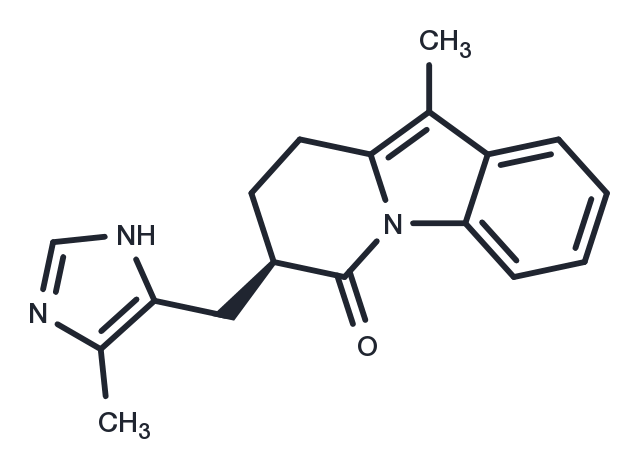Powder: -20°C for 3 years | In solvent: -80°C for 1 year


Fabesetron (FK1052) is an orally active compound that acts as a dual antagonist, targeting both the 5-HT3 and 5-HT4 receptors. It exhibits efficacy in studying emesis induced by cancer chemotherapy, showing potential for managing both acute and delayed symptoms.

| Pack Size | Availability | Price/USD | Quantity |
|---|---|---|---|
| 5 mg | Inquiry | $ 970.00 |
| Description | Fabesetron (FK1052) is an orally active compound that acts as a dual antagonist, targeting both the 5-HT3 and 5-HT4 receptors. It exhibits efficacy in studying emesis induced by cancer chemotherapy, showing potential for managing both acute and delayed symptoms. |
| In vivo | Fabesetron (FK1052) at a dose of 0.1 mg/kg when administered orally, effectively inhibits the increase in colonic transit in male Sprague-Dawley rats (220 to 330 g) and also completely prevents cisplatin (18 mg/kg, i.p.)-induced emesis in Suncus murinus (either sex, >10-week-old, 30-70 g). The study utilized male Sprague-Dawley rats and ddy mice for evaluating its effect on colonic transit, reporting a significant delay and inhibition degree of 33.8 ± 4.8% following a 0.1 mg/kg oral dose. In a dose-dependent manner, FK1052, administered orally 30 minutes before cisplatin, showed inhibited emesis in Suncus murinus, with no emesis observed at 100 μg/kg, indicating its potential for managing chemotherapy-induced side effects. |
| Synonyms | FK1052 free base |
| Molecular Weight | 293.37 |
| Formula | C18H19N3O |
| CAS No. | 129300-27-2 |
Powder: -20°C for 3 years | In solvent: -80°C for 1 year
You can also refer to dose conversion for different animals. More
bottom
Please see Inhibitor Handling Instructions for more frequently ask questions. Topics include: how to prepare stock solutions, how to store products, and cautions on cell-based assays & animal experiments, etc.
Fabesetron 129300-27-2 FK1052 free base FK-1052 FK1052 FK 1052 inhibitor inhibit
